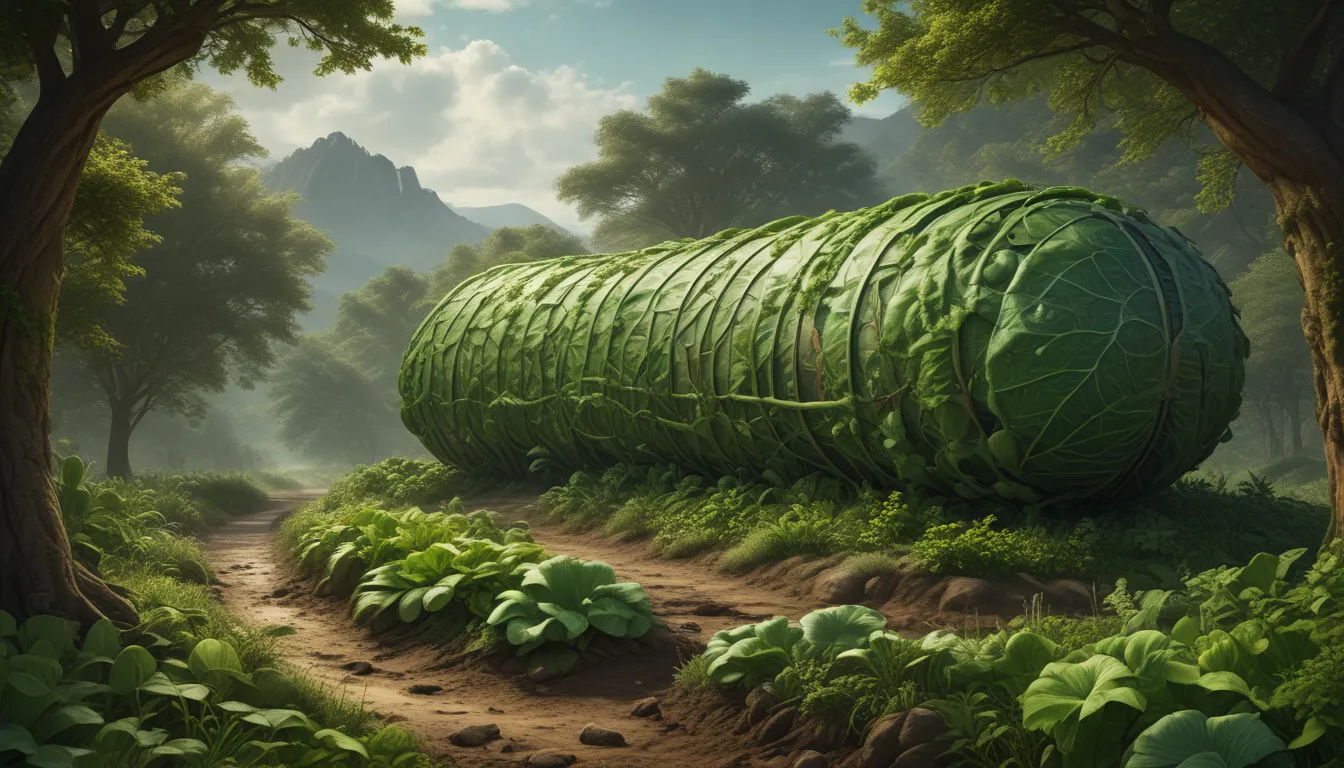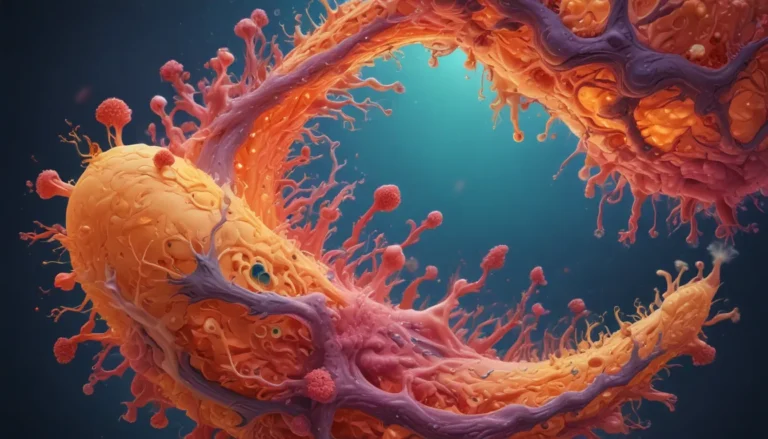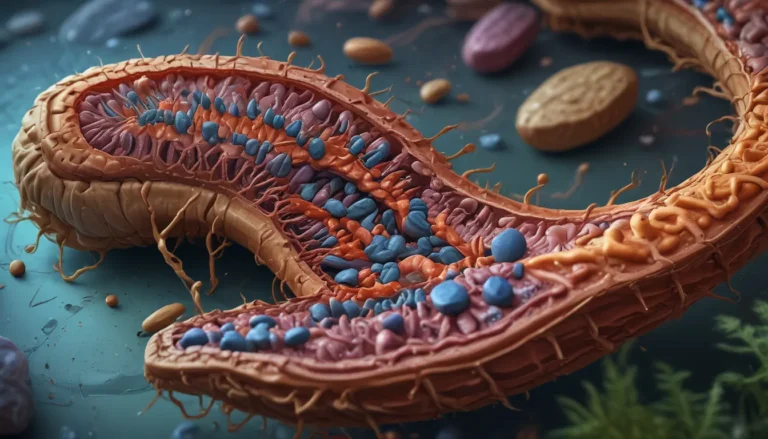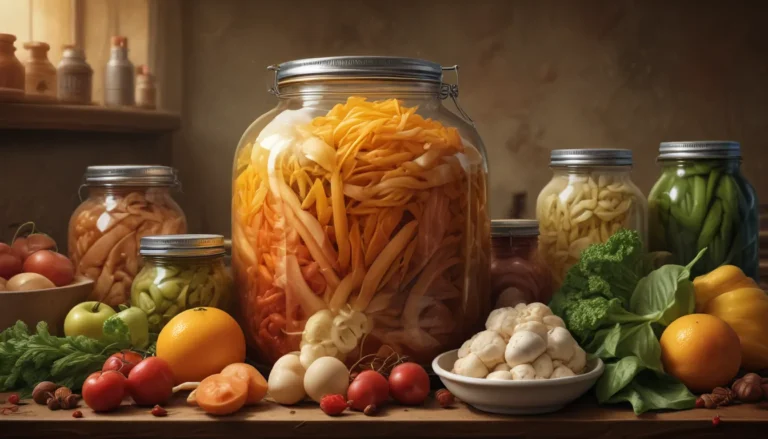A Note About Images: The images used in our articles are for illustration purposes only and may not exactly match the content. They are meant to engage readers, but the text should be relied upon for accurate information.
Have you ever stopped to marvel at the intricate beauty of chloroplasts, the green powerhouses housed within plant cells? These tiny organelles are not just responsible for photosynthesis but also harbor a wealth of surprising facts that many are unaware of. Join us on a journey as we uncover eight remarkable and little-known details about chloroplasts that will deepen your appreciation for these essential components of plant life.
Evolutionary Marvel: Chloroplasts Were Once Free-Living Organisms
Imagine a time when chloroplasts roamed freely as cyanobacteria, independent and self-sufficient. Through the miraculous process of endosymbiosis, these ancient organisms formed a symbiotic relationship with eukaryotic cells, ultimately becoming indispensable to plant survival. Chloroplasts are like tiny superheroes that joined forces with plant cells, evolving into versatile multitasking organelles vital for photosynthesis.
Genetic Autonomy: Chloroplasts Possess Their Own DNA
Unlike most organelles, chloroplasts retain a remnant of their independent past with their very own set of genes encoded in chloroplast DNA (cpDNA). These genes are crucial for sustaining the organelle’s functionality, especially in the realm of photosynthesis. The presence of chloroplast DNA hints at the autonomy and resilience of these organelles through millions of years of evolution.
Multiplication Magic: Chloroplasts Can Multiply within Plant Cells
One of the awe-inspiring abilities of chloroplasts is their capacity to multiply within plant cells through binary fission. By replicating their DNA and dividing, chloroplasts ensure a plentiful supply within the cell, facilitating efficient photosynthesis. This multiplication process exemplifies the dynamic nature of chloroplasts and their role in sustaining plant life.
Diverse Hues: Chloroplasts Are Not Limited to Green Color
While we often associate chloroplasts with their signature green hue from chlorophyll, these organelles can display a vibrant array of colors. Some organisms boast chloroplasts tinted in red, orange, or even brown hues, thanks to diverse pigment compositions. This color diversity enables organisms to adapt to varying light conditions and optimize their photosynthetic capabilities.
Collaborative Communication: Chloroplasts Engage with the Nucleus
Intriguingly, chloroplasts engage in intricate communication with the cell’s nucleus to coordinate their activities. Through signaling mechanisms, chloroplasts influence gene expression in the nucleus, fine-tuning chloroplast development and function. This harmonious communication ensures optimal synchronization between the nucleus and chloroplasts, enhancing the efficiency of photosynthesis and cellular processes.
Defenders of the Plant Realm: Chloroplasts Play a Role in Defense Mechanisms
Beyond their energy-producing prowess, chloroplasts serve as active participants in plant defense mechanisms. In response to stress triggers like pathogen attack or environmental fluctuations, chloroplasts release signaling molecules that bolster the plant’s immune response. This dual role of chloroplasts underscores their versatility and multifaceted contributions to plant health and survival.
Dynamic Mobility: Chloroplasts Can Move within Plant Cells
Contrary to the perception of stationary organelles, chloroplasts exhibit remarkable mobility within plant cells, adapting to light conditions through phototropism. By repositioning themselves within the cell, chloroplasts optimize light absorption, maximizing energy production. This dynamic movement showcases the adaptability of chloroplasts in harnessing light energy for photosynthesis.
Widespread Presence: Chloroplasts Extend Beyond Plant Cells
While chloroplasts are synonymous with plant cells, these essential organelles also inhabit certain algae and protists. Known as photosynthetic eukaryotes, these organisms harbor chloroplasts akin to those in plants, emphasizing the broad significance of these organelles in diverse life forms. The widespread presence of chloroplasts underscores their pivotal role in the evolution and sustenance of life on Earth.
In conclusion, the enigmatic world of chloroplasts holds a trove of astonishing facts that illuminate the intricate workings of these organelles. From their evolutionary journey as independent entities to their pivotal roles in plant physiology and defense, chloroplasts stand as guardians of photosynthetic vitality in the natural world. By unraveling these surprising facts, we unveil the rich tapestry of chloroplast function and evolution, deepening our reverence for these captivating organelles.
FAQs: Unraveling the Mysteries of Chloroplasts
-
What is the primary function of chloroplasts?
Chloroplasts are responsible for executing photosynthesis, the process that converts sunlight, water, and carbon dioxide into glucose and oxygen, fueling plant growth. -
Where are chloroplasts typically located within plant cells?
Chloroplasts are predominantly found in the cells of green plants, particularly in the mesophyll tissue where photosynthesis predominantly occurs. -
Do chloroplasts exist in organisms other than plants?
Although chloroplasts are primarily associated with plants, they are also present in certain algae and photosynthetic organisms, showcasing their diverse distribution. -
How do chloroplasts capture sunlight for photosynthesis?
Chloroplasts contain chlorophyll pigments that absorb sunlight energy, housed within thylakoid membranes where light reactions initiate the photosynthetic process. -
Can chloroplasts exhibit movement within plant cells?
Indeed, chloroplasts showcase mobility within plant cells, responding to environmental cues like light intensity and carbon dioxide availability to optimize photosynthetic efficiency. -
Do chloroplasts undertake functions beyond photosynthesis?
Apart from photosynthesis, chloroplasts contribute to metabolite production and storage, hormone synthesis, stress responses, and signaling pathways within plants, showcasing their multifaceted roles. -
Can chloroplasts replicate and divide within plant cells?
Chloroplasts possess their own DNA and can divide through binary fission, akin to bacterial cell division, crucial for maintaining chloroplast populations within plant cells. -
How ancient are chloroplasts in evolutionary history?
Chloroplasts trace their origins back to ancient cyanobacteria through endosymbiosis, establishing a symbiotic relationship that shaped their evolution over eons, highlighting their enduring presence in the natural world.
Relish these enchanting facts about chloroplasts, delving into their extraordinary world of evolution, diversity, and functionality. Each revelation unveils a new facet of these essential organelles, underscoring their pivotal role in sustaining life on Earth. Let the wonders of chloroplasts spark your curiosity and appreciation for the intricate mechanisms that drive the magnificent world of photosynthesis.
By infusing educational and fascinating insights into the article, readers can gain a deeper understanding of chloroplasts and their significance in the realm of plant biology. The engaging and informative tone ensures that readers are captivated by the marvels of chloroplasts, broadening their knowledge of these essential organelles.






